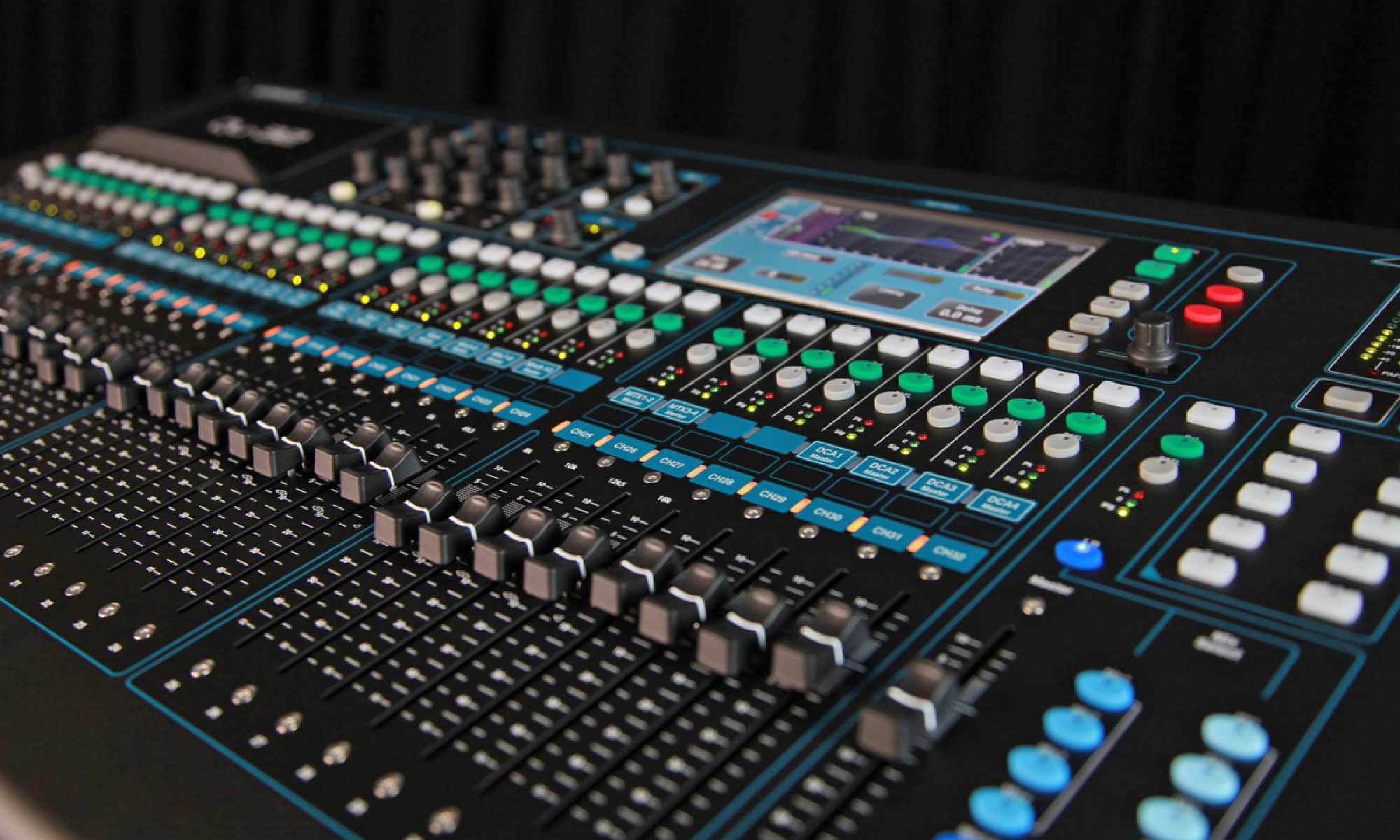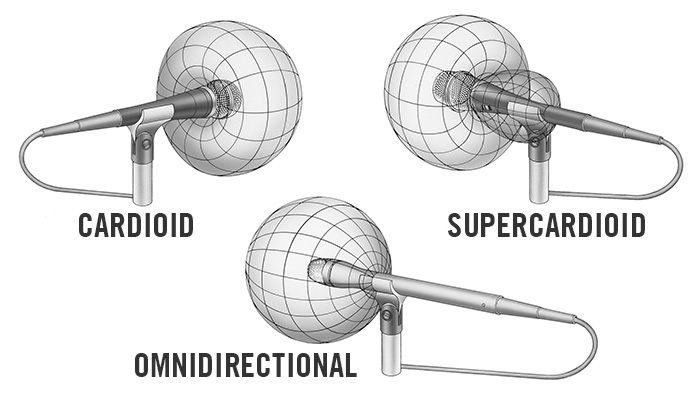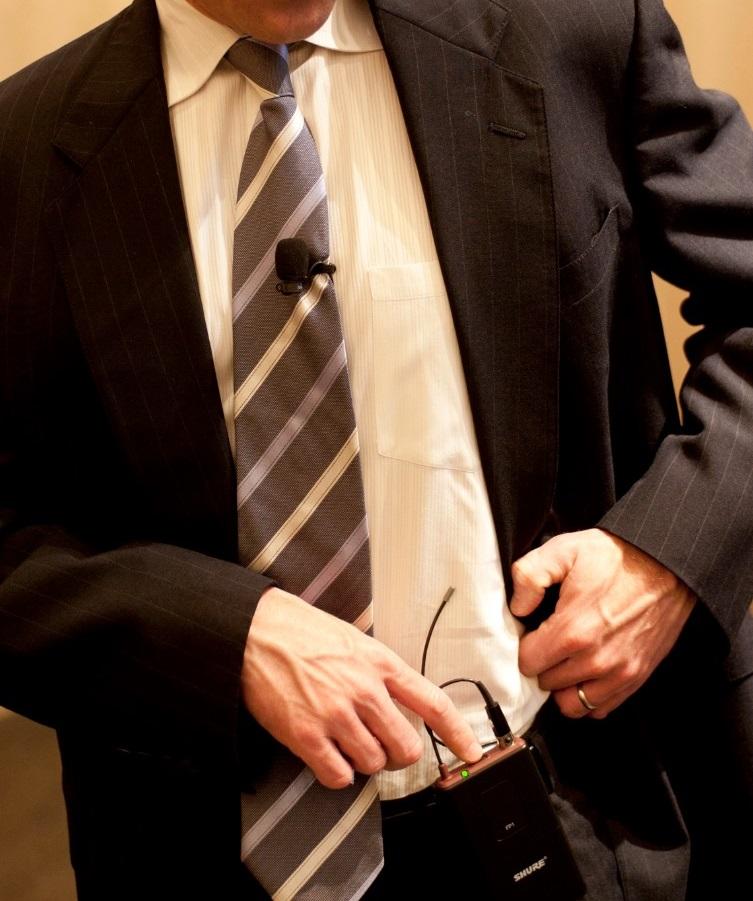This week I’m starting a new Gear Talk series on micing up speakers for different events. I spent a lot of my early years without much choice in any given scenario and while what I was doing worked, sometimes pretty effectively, I’ve learned that things could have been better. I see just about everyday in a lot of the groups I’m in people asking about a certain headset or lapel or this or that. What I’d like to reinforce with this series is to accumulate for yourself options. With options you can fit each mic into a given scenario instead of forcing one option on all scenarios. This week I’m going to hit on what I use for podium mics and lapels, next week is my pick for a budget microphones with best utility and best sound the following weeks. I’m going to do my best as well to present you with options of other things I’ve tried or heard of over the last few years as I’ve started to build up my “options.” Probably one of the best things you can do if you are hesitant to buy other microphones is to rent/demo a headset for an event. Don’t take any unnecessary risks but spend the money to try new things, you just never know what you might discover.
But before I get into the specifics, I wanted to talk about the types of mics we buy. There is a big trend, especially in the church world, to buy cardioid or unidirectional microphones. The idea being that you have a much higher threshold before feedback. However, if you don’t get that mic placed perfectly on someone’s face you’re going to have issues. Ever wonder why you see those crazy EQ curves posted, well they were probably using a cardioid mic that wasn’t placed well so to make it sound clear they had to fake it. That’s why I’ve always preferred omnidirectional microphones. You need to be a bit more careful as far as feedback is concerned but it is incredibly forgiving in terms of placement and can move a bit and not lose it’s clear tone. At that point you are EQing for mostly feedback prevention and slight corrections for tone. I always try to argue for omnidirectional as far as headsets go because it was always my theory that cardioid microphones were developed for situations like intercom and sportscasting in loud stadiums not for speech in an auditorium. If you have any more questions regarding this topic, just hit me up in the comments section and we can touch base.
Sometimes you don’t always have wireless channels available for speakers or it’s a no-fail scenario like a memorial service or wedding, or there is just the need for a mic that a bunch of people can walk up and use than you are going to want to use a podium mic. In my early years I would just make a really tight ORTF pair with some beta58 microphones or just any condenser I had sitting around to create a wide pickup pattern. But, since then, I have seen the light in regards to podium microphones and finally stepped up my game. We have a few options for flexible neck microphones here but the main one we always have on a stand is the Shure MX418. I love it for a number of reasons, the principle of which is just its’ size and design. At 18” long it’s a length suitable for any podium height or depth and allows for the stand to be out of the limelight. It also has a very small and lightweight microphone which helps it basically disappear. When properly gained it’s pickup range is quite large which when coupled with a properly placed and tuned sound system has a huge amount of headroom before feedback (yes it’s a cardioid mic but that works to our advantage here because of how podium mics are setup). Adjustable and flexible necks like this are great for this because you can encourage each speaker to gently adjust the mic to fit each time. It is incredibly priced and I’d encourage you to check it out if you don’t already have a solid podium mic in your arsenal.
At least one lapel is something that everyone should probably have in their drawers just for those unexpected requests or strange situations. There are some speakers that insist on not wearing a headset or simply just ask for a lapel (even though it’s not my form factor of choice) so I believe that you need to have at least one, if not a couple. For me, it’s a pretty simple choice, the Shure WL185 (used to be the WL184 but they’ve updated it and thus changed the model number). It ships with a lot of wireless packages and if you don’t have one, you can pick it up for about $100. For me, this is the sm58 of lapel microphones. I’ve used it at corporate events, memorial services, weddings, and just about anything you can think of. However, because of it’s pattern, be sure to place it very carefully. Face the mic towards the mouth of the subject and place it about six inches away to start with. When it gets too far off axis from the speaker, it’s going to start really struggling. So, if you want something that is a bit more flexible (read omnidirectional), we have a few DPA 4060 lapels that our video teams use for their videos that I’d recommend as well. On a side note, these can also be great string instrument mics with the right clips in a pinch. This could be the only place where I might prefer a cardioid lapel for live speech vs. omnidirectional but I’d probably end up waffling back and forth. Either way, it is worth having at least one lapel and I’d highly recommend one of the two that I just listed.
That’s it for this week. But for my own growth, let me know what podium mics or lapels you use that aren’t listed or perhaps there is a great podium setup you use regularly, jot it down and send me the note. I’d love to learn what works for you guys. Next week, as I mentioned above are my picks for budget headsets that still sound pretty good. As always if you have any questions or thoughts, leave a comment below or drop me an email at daniel@studiostagelive.com. If you haven’t already but would like to, follow this link and subscribe to the blog to get an email when new content has been posted. Until next week, happy mixing!


